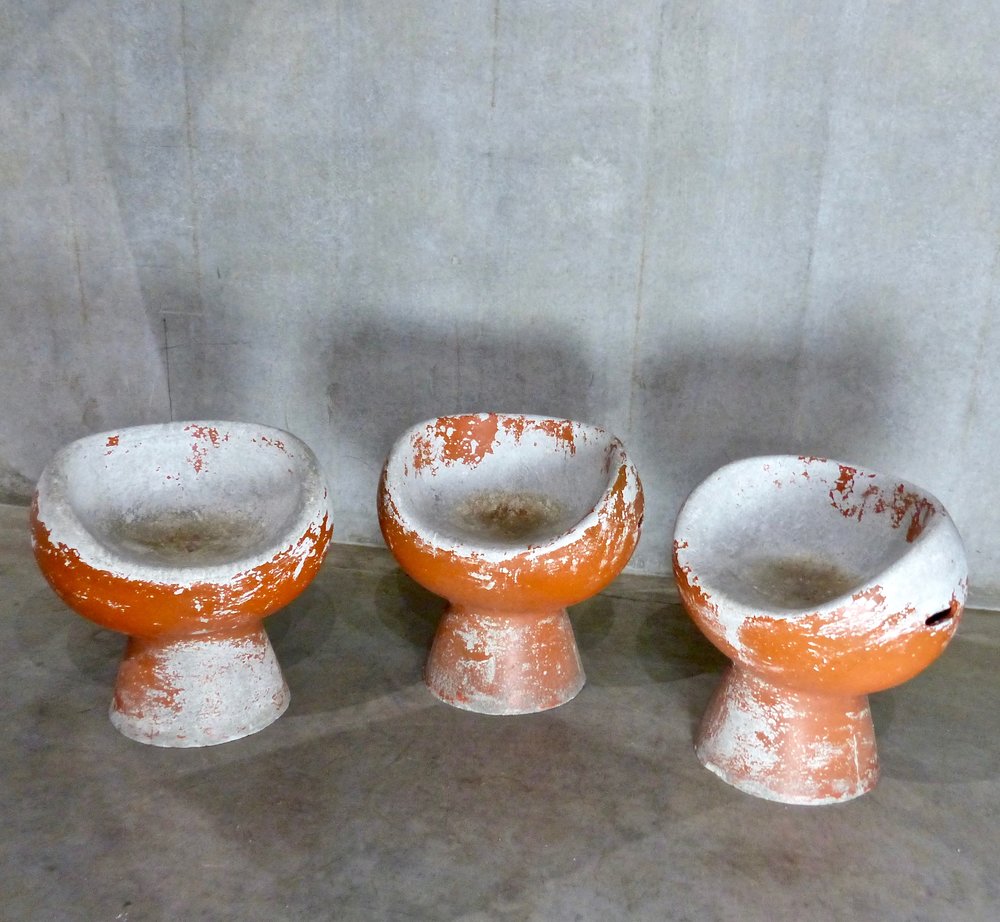
1960s Willy Guhl Concrete Chairs for Eternit
- Regular price
- $0.00 CAD
- Sale price
- $0.00 CAD
- Regular price
-
Description
27H” x 27W” x 21D”
PRICE UPON REQUEST
Very rare matched set of three cast, hollow concrete European ‘Pod’ chairs. Designed by important Swiss designer/cabinetmaker/teacher, Willy Guhl, and made for Eternit in the 1960s. The painted concrete chairs, with cut-out handles on each side for ease of movement, can be used indoors or outdoors.
Willy Guhl (1915 to 2004) was one of the most influential industrial designers in Switzerland. He was trained as a cabinetmaker and by 1939, opened his own workshop. After the war, he designed the first plastic-shell chair in Europe, and in 1948, participated in New York’s Museum of Modern Art (MoMA) competition ‘Low-Cost Furniture Design’ (which launched the careers of Charles Eames and many others.)
Guhl began designing cast concrete chairs, planters, and other objects for Eternit AG in 1954. From 1951 to 1980, Guhl was head of interior design at the Vocational Arts College in Zurich, and between 1965 and 1980, was also head of product design at that same institution.


